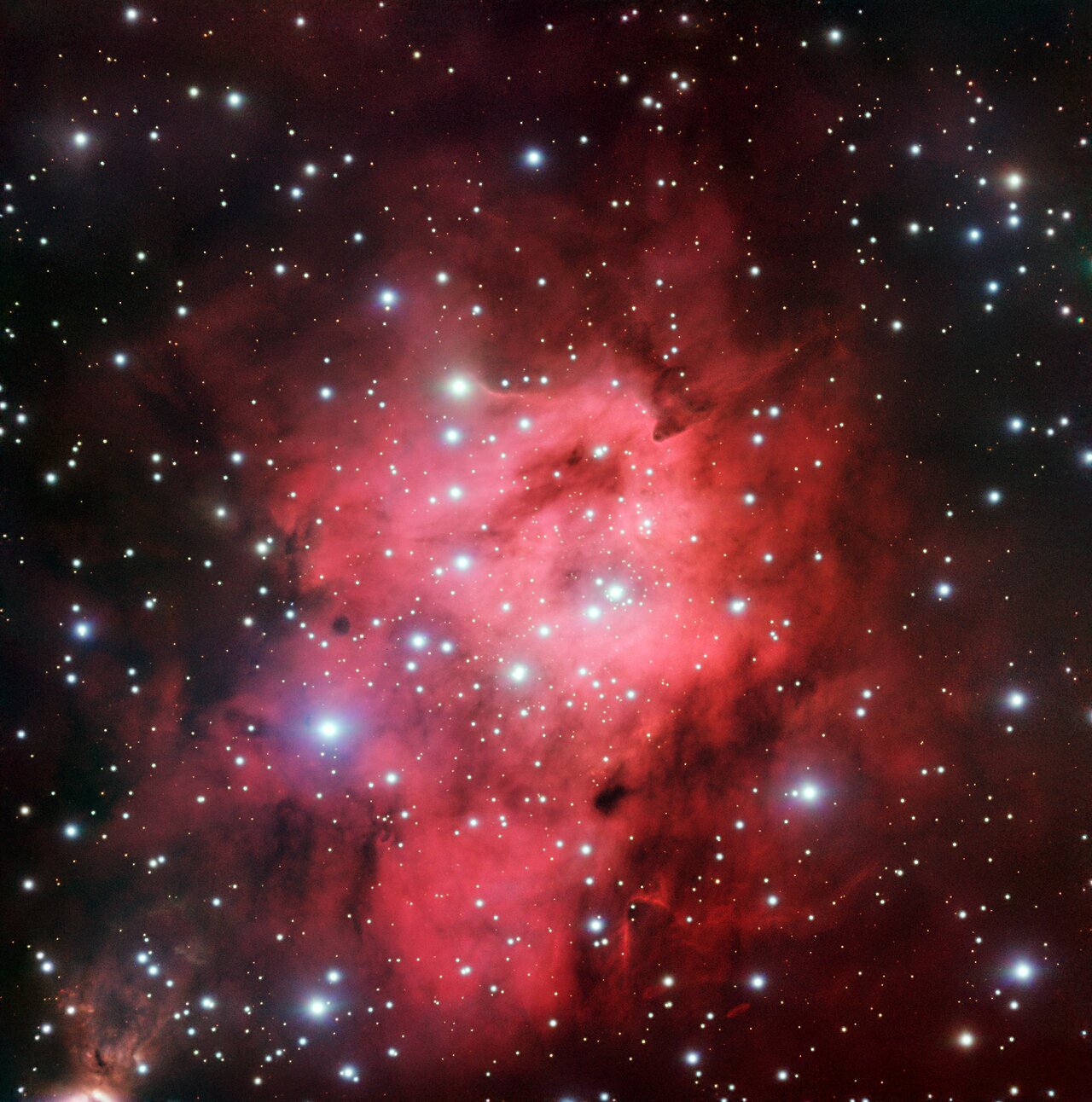The Cosmos with Sh2-305
This gently glowing area of sky is actually a hot bubble of hydrogen gas — named Sh 2-305 — that has been bombarded by intense radiation from nearby stars. Such gas clouds are known as emission nebulae, or HII regions (pronounced “H-two”). The radiation in question is in the ultraviolet part of the spectrum and is thought to emanate from at least two O-type stars, and likely several others. This stellar class is the brightest and hottest that we know of — such stars can be up to 90 times as massive as the Sun, and an incredible one million times as bright. Together with five neighbouring bubbles, Sh 2-305 belongs to a giant complex of dense clouds of dust and gas and, on a larger scale, an enormous ring called the GS234-02 star-forming supershell (located in the Perseus arm of the Milky Way, in the constellation of Puppis). This image was obtained under the ESO Cosmic Gems programme, an outreach initiative to produce images of interesting, intriguing or visually attractive objects using ESO telescopes, for the purposes of education and public outreach. The programme makes use of telescope time that cannot be used for science observations. All data collected may also be suitable for scientific purposes, and are made available to astronomers through ESO’s science archive.
